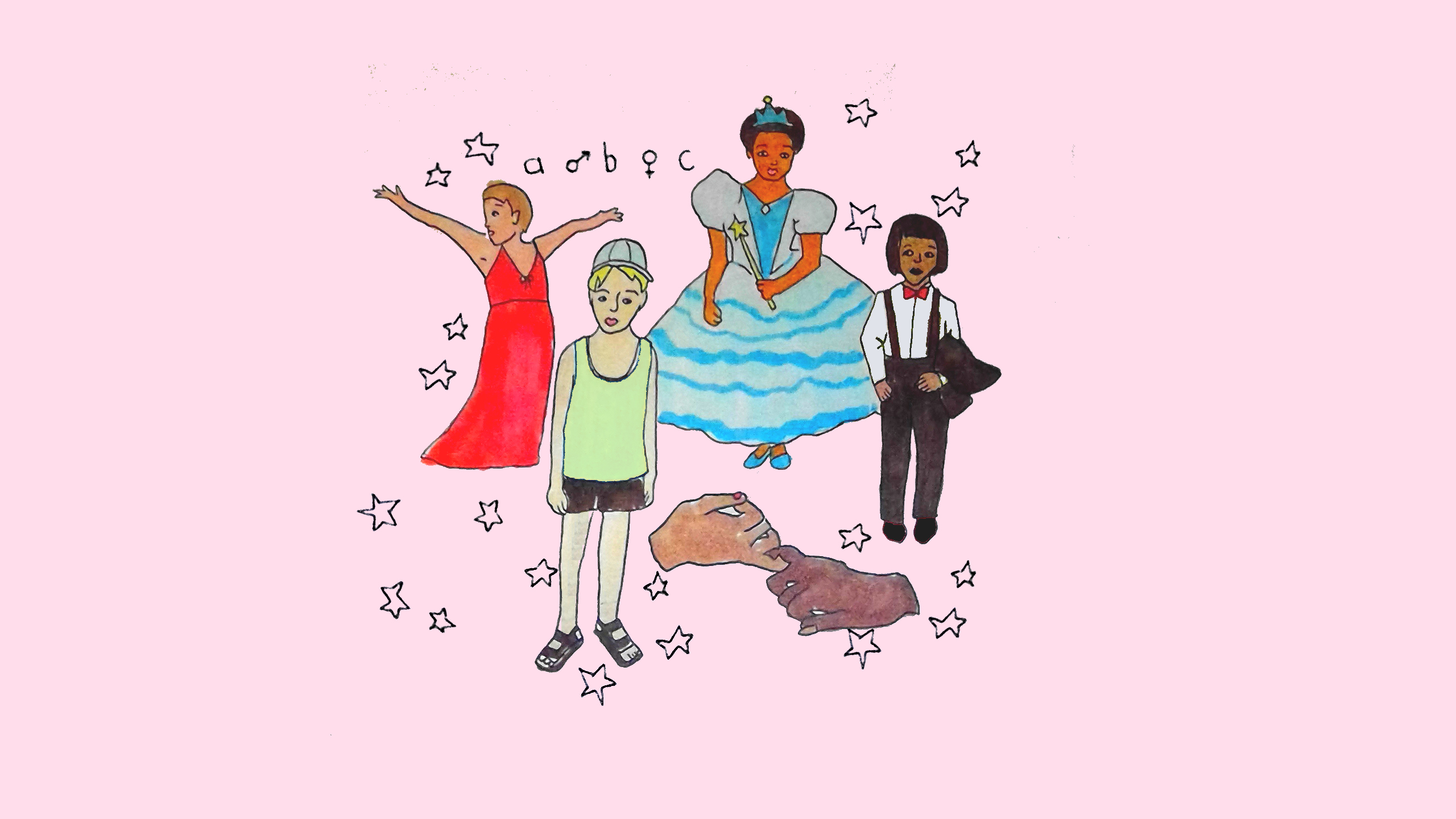“We’re all born naked and the rest is drag,” belts out the legendary drag queen RuPaul in his song “Born Naked.” While the average kid would be overshadowed by the glamour of a 7-ft.- tall drag queen in heels, a child would nevertheless put on an equally entertaining gendered performance.
For most parents, assigning gender roles to their newborn is a naturalized no-brainer, as many do not grasp the weight of their ruling. Our gender expression is the product of years of rehearsal, compounded with social rewards and, more significantly, punishments for straying from the script. Indeed, few of us exit the womb preferring racecars to ribbons — we’re drooling pudgy cherubs, after all. However, the stage is set by the colour of our nurseries, the plots of our fairy tales, and the forces of socialization that mold boys and girls into their roles.
But what happens when queer kids stray from cis-normative scripts and aren’t certain they want to tell their parents? In Alberta, it’s become a politicized issue — one so massive that the political right has triggered an aggressive moral panic. The United Conservative Party of Alberta has demonized Gay Straight Alliances in schools for exposing children to gender diversity and providing a safe space for isolated queer students. Conservative leader, Jason Kenney, is demanding that teachers break the confidence of vulnerable queer kids by outing students to their parents. What social conservatives who shudder at boys wearing makeup fail to see is that we are ultimately all drag queens.
What’s even more intriguing than the illusion of scandalous hyperfemininity in drag shows is the illusion of gender itself. The performance of masculinity, for example, in “duck dynasty culture” and amongst fraternity bros is equally as contrived. The difference, of course, is that drag queens intentionally present a façade, whereas chest-thumping jocks project a staged authenticity. In this way, the “realness” of gender, be it on drag queens, tiara-wearing toddlers, or hockey bros, is ultimately artificial. Subsequently, the absurd theatricality of gender implodes when conservatives shame queer kids, and valorize their nuclear model of “traditional family values.”
This theatricality had been explored by RuPaul long before he hit mainstream TV, through his performance of punk-rock “gender fucking.” Gender fucking was an iconoclastic middle finger to the script of gender roles — torching the lifetime of rehearsals that penalize femme queer youth. By rejecting the straightjacket of gender oppression, drag performers created a medium through which they could express their individuality.
This wisdom is shared weekly with toddlers at a library in Winnipeg, Manitoba, where drag queens present an event titled “Read By Queens.” The drag queens present a story hour and invite youth to question the seemingly natural gender roles imposed at birth. Through dramatic character transformations, the queens flaunt the artificiality of gender. The hours of gluing brows, padding hips, pinning wigs and artfully re-sculpting their bone structure satirically demonstrate the instability of gender codes. Therefore, given a safe space in libraries or Gay Straight Alliances, kids can subvert the gender binary in sequined gowns, and slowly wrench loose the grip of biological sex roles. How fabulous it is to break the rules.
Granted, flamboyant lipstick and contour can be rinsed away at the end of a nightclub performance, but for many nonbinary and trans folks, gender expression goes beyond a performative aesthetic, and is intrinsic to their very identity. In the same way that non-drag bodies are shaved, sculpted, and inscribed with gender codes, the body of a drag performer presents a stage for rebellious liberation. Rooted in a history of gay and trans activism, drag mocks the oppressive systems that violently punish queer youth.
On a personal level, I began extravagantly transgressing the gender binary before I knew what it was. Photo albums can attest to 5-year-old Quinn strutting about Alberta in orange Anne of Green Gables wigs and oversized womanly regalia. I distinctly remember twisting bath towels into headpieces and lip syncing to ABBA in the mirror. Yet for many queer kids, the home is not a safe space to disobey gender roles. In Canada, LGBTQ teens are four times more likely to attempt suicide and comprise 40 per cent of the youth homeless population. Ostracized queer teens are frequently banished from their biological families and targeted for political points. Conservatives like Jason Kenney weaponize queer children in their deranged supposed defense of youth’s innocence. Through opposing Gay Straight Alliances, Kenney drags kids into the crossfire of the culture wars.
To their credit, some femme-shaming conservatives might grow jealous of queers. Not only do we have marvelous closets, but we constantly concoct colourful new language. And so to remedy this, I am proposing a new term for the heterosexual lexicon to describe the normalized gender performance of Jason Kenney, Stephen Harper, and the like: STRAG (noun): A heterosexual cocktail of “straight” cisgender expression, paired with the off-brand theatricality of drag. Used in a sentence: the strag couple grew uncomfortable at the sight of a drag queen, and hid their strag presenting child from the queen. And so to all queer-phobic strag performers who walk through the streets in their strag outfits, with their strag mannerisms, and strag rules imposed on strag children, I’m afraid your time has come to sashay away.

